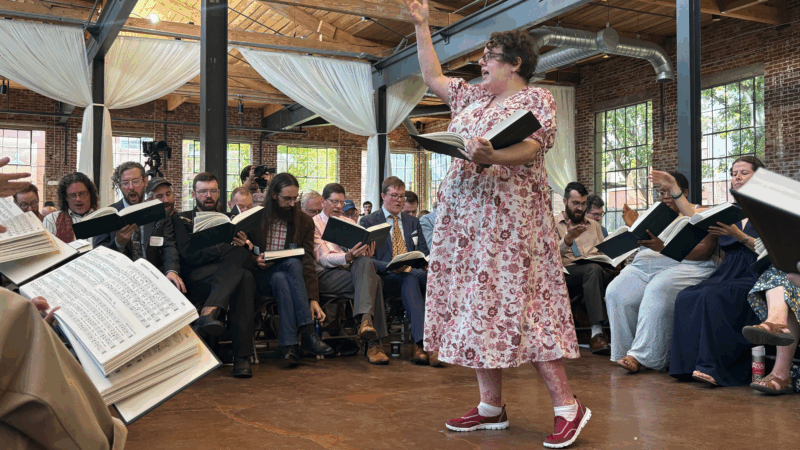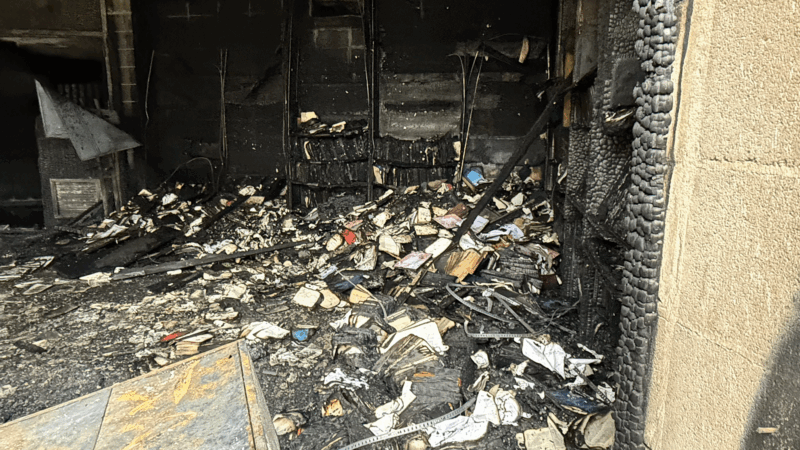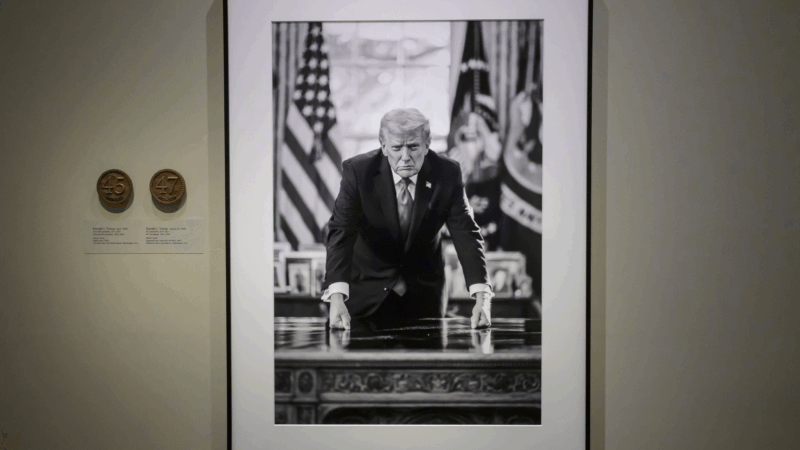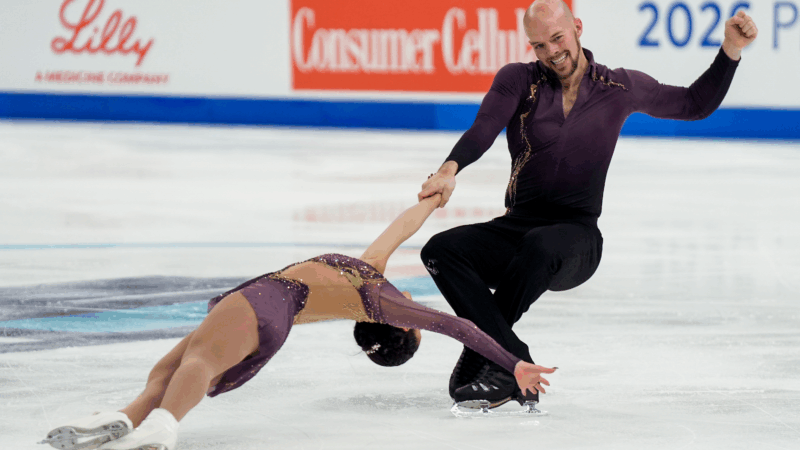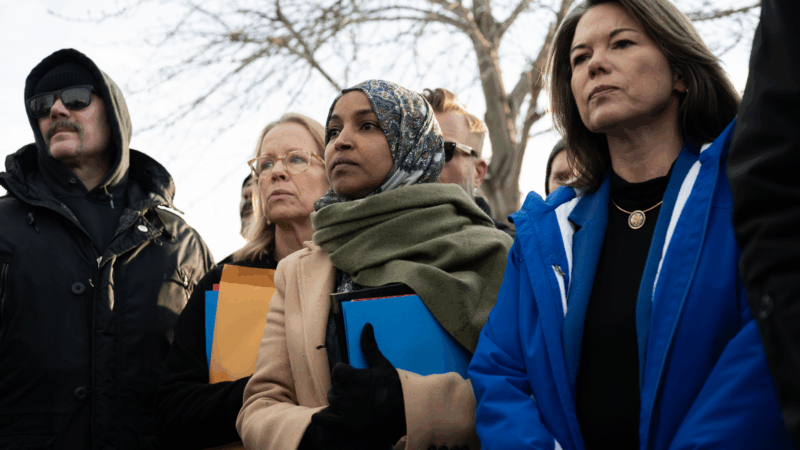Latest update of 1844 American songbook reflects new generation of ‘Sacred Harp’ singers
Atlanta – More than 700 singers convened in Atlanta this month to celebrate the latest edition of the songbook at the heart of one of the country’s oldest Christian music traditions.
The Sacred Harp, first published in 1844, contains hymns and anthems written with “shape notes,” designed to aid sight reading. Unlike in standard music notation, each note is a triangle, a circle, a square or a diamond. Each shape stands for a syllable, fa, sol, la or mi, and each syllable corresponds with different pitches.

The convention was the largest Sacred Harp singing in living memory and culminated seven years of work to revise the book. Hundreds traveled long distances to sing the 113 new songs.
“It’s the only time in most of our lifetimes that we’re going to see a gathering like this,” said composer Angharad Davis of Sydney, Australia.

Sacred Harp is centered in the American South, but singers came from 35 U.S. states, three Canadian provinces, Australia, the UK, Ireland and Germany. They sang in tenor, treble, alto and bass sections, without instruments. The so-called “Sacred Harp” is the human voice itself, said alto Lucy O’Leary.
All the songs express Christian faith, with mortality as a prominent theme. “Hallelujah” uses words from 1759: “And let this feeble body fail, / And let it faint or die; / My soul shall quit this mournful vale, / And soar to worlds on high.”
No denomination controls Sacred Harp. Baptists, Quakers, Catholics, Episcopalians, Mennonites, atheists and others sing together, and all are welcome.
For almost two centuries, each new generation has updated the book, which now includes songs by 49 living composers. (Before the latest revision, that number had dwindled to five.)
But the tradition’s vitality did not feel as secure when the last revision was made, in 1991.
Judy Hauff, who composed four songs in the book, discovered Sacred Harp in the mid-1980s. Back then, almost every singer had gray hair, she told the convention.
“I would stand there listening to the roar coming off of these senior citizens and thinking, ‘What would this have sounded like when they were in their 20s and 30s and 40s?'” Hauff said.
At the time, she’d thought she’d never find out.
“We never dreamed we would see the likes of this,” Hauff said through tears, gesturing to the crowd. It included hundreds of singers under 50 — with black, brown, blonde and even purple hair — alongside the old-timers.
Lauren Bock of Atlanta, who composed three songs in the new book and served on the nine-person revision committee, said the increase in young singers is partly attributable to the 2003 film Cold Mountain, which featured Sacred Harp, and to YouTube.
As the pool of singers shifts younger, it also contains more people of color, LGBTQ+ people and non-religious people.
The book’s new composers reflect that. José Camacho-Cerna of Valdosta, Georgia, the book’s first Latino composer, is 27.
“I was in a punk band, I know it’s kinda crazy. That’s something that attracted me to [Sacred Harp], I just thought it was very metal. The 1800s metal,” he said.
Camacho-Cerna is also engaged to marry a man, and he’s among the first openly LGBTQ+ composers.

He grew up in a Pentecostal church that did not accept LGBTQ+ people, and he was surprised to meet so many at his first singings at age 19. Eventually, he said, he started to feel that Sacred Harp people only cared about the music, not other singers’ sexual orientations. It gave him the courage to come out.
“Sacred Harp was a big push for me to say ‘Ok, let’s rip the band-aid off. I can be who I want to be — who I am, and stop hiding myself,” he said.
Composers led their own songs at the convention, standing in the middle of the square of singers and beating their arms up and down to keep time. Camacho-Cerna composed his song, “Lowndes,” after the death of his grandfather in Honduras. Hearing it “in all its glory” for the first time was “life-changing,” he said.
“Without trying to be weird, I could die happy,” he said. “Knowing that I have a legacy, you know?”
Deidra Montgomery of Providence, Rhode Island, the first Black composer added to the book, started work on their song, “Mechanicville,” in 2010.
“Leading my song in a giant class of singers, turning to bring in the different sections in the fugue and seeing all these people I’d encountered in various phases of my time as a singer was euphoric,” Montgomery said.

During recesses, singers approached composers for autographs.
Diversifying the list of composers was not an explicit goal for the new book, said Bock. In fact, she and her fellow revision committee members analyzed songs without knowing their authorship. The new composers simply reflect the current community, she said.
“The people who submitted songs are the people who sing out in the world,” Bock said. “They’re pretty markedly different even from who sang in 1991.”
On the second day of singing, Bock’s daughter Lucey Karlsberg, 8, led “Hallelujah” with other children.

Later, Karlsberg sang with others at the grave of Benjamin Franklin White, who compiled the original songbook. When the next revision comes out, Karlsberg will likely be in her 40s. Asked if she wants to contribute a song, she had no doubt. “I will do it!” she shouted.
Transcript:
MARY LOUISE KELLY, HOST:
Hundreds of singers from all over the world gathered recently in Georgia. They were there to celebrate recently the new edition of a songbook called “The Sacred Harp.” As Laura Atkinson with the Appalachia Mid-South Newsroom reports, the book is central to the old American tradition of shape-note singing.
LAURA ATKINSON, BYLINE: In a church near Atlanta, singers are eagerly cracking open their brand new “Sacred Harp” songbooks, which they got just minutes ago. Then David Ivey, with the Sacred Harp Publishing Company, steps up to a podium.
DAVID IVEY: Welcome to this celebration weekend for the debut of “The Sacred Harp: 2025 Edition.”
(CHEERING)
ATKINSON: The music inside the book looks unusual. The notes are shapes that correspond with syllables like fa, sol and la. It was popular with Christians in the South during the 1800s because it taught untrained singers to read music. Today, the songs are still sung with no rehearsal, no audience and no instruments.
UNIDENTIFIED MUSICAL ARTISTS #1: (Vocalizing).
IVEY: This is our long history of groups of singers collaborating to produce our songbook, 176 years.
ATKINSON: The last time this songbook was revised was before the internet. The shape-note community has changed and grown quite a bit since then. A revision committee added 113 new songs out of nearly 1,200 submissions from all over the world.
UNIDENTIFIED PERSON: Enjoy the party.
JOSE CAMACHO-CERNA: Awesome.
ATKINSON: During a lunch break, singers are so eager to try the new tunes out, a few dozen form an impromptu group outside.
CAMACHO-CERNA: You can kind of feel how electric the air is. Everybody’s just so excited.
ATKINSON: That’s Jose Camacho-Cerna. He wrote one of the new tunes in the book. He asked the group if they want to try out his song, named “Lowndes,” after the county in Georgia where he lives.
UNIDENTIFIED MUSICAL ARTIST #1: Yeah, yeah.
UNIDENTIFIED MUSICAL ARTIST #2: Let’s do it.
CAMACHO-CERNA: Oh, my gosh. Oh, my gosh.
UNIDENTIFIED MUSICAL ARTISTS #2: (Vocalizing).
ATKINSON: This will be his first time hearing it in the wild.
UNIDENTIFIED MUSICAL ARTISTS #2: (Singing) The morning walks upon the earth. And man awakes to toil and mirth. All living things and lands are gay…
ATKINSON: Camacho-Cerna is part of a younger crowd that’s found shape-note singing in recent years. He says the melodramatic lyrics about mortality and sin and the simple yet powerful chords made an easy transition from the music he was used to.
CAMACHO-CERNA: I was in a punk band (laughter). I know. It’s kind of crazy. And that’s something that really attracted me to it. I just thought it was very metal, the 1800s metal.
ATKINSON: He came for the music but stayed for the community. It’s surprisingly diverse. Here, women with short purple hair sing next to men with long white beards in four-part harmony.
CAMACHO-CERNA: I love the singing. I love the community, and now I get to be part of a, you know, historic legacy, you know? So yeah, I’m quite happy.
ATKINSON: The first official singing from the new “Sacred Harp” is about to start. Around 700 people showed up, and they sing together for the first time.
UNIDENTIFIED MUSICAL ARTISTS #1: (Singing) Jesus and shall it ever be, a mortal man ashamed of thee.
ATKINSON: David Ivey stands in the back, wiping tears from his eyes. He says “The Sacred Harp” is more than a collection of songs. It’s a symbol of unity.
IVEY: This book is precious to people. The book is what binds our community, the diaspora of singers everywhere.
ATKINSON: Ivey says 50 years ago, people thought that shape-note singing was on its way out, but the update of “The Sacred Harp” keeps the book a living document.
For NPR News, I’m Laura Atkinson in Atlanta.
UNIDENTIFIED MUSICAL ARTISTS #1: (Singing) On whom my hopes…
Arson engulfs Mississippi synagogue, a congregation once bombed by Ku Klux Klan
A suspect is charged with arson in a fire that burned through a synagogue in Mississippi. Flames and smoke destroyed its library, housing Torahs.
DOJ subpoenas Federal Reserve in escalating pressure campaign
The Justice Department has subpoenaed the Fed over chair Jerome Powell's testimony over the central bank's headquarters renovation. Powell calls it part of a pressure campaign over interest rates.
The 2026 Golden Globe awards are Sunday. Here’s how to watch
The 2026 Golden Globes air on Sunday night starting at 8 p.m. ET / 5 p.m. PT.
National Portrait Gallery removes impeachment references next to Trump photo
A new portrait of President Trump is on display at the National Portrait Gallery's "America's Presidents" exhibition. Text accompanying the portrait removes references to Trump's impeachments.
America’s top figure skaters dazzled St. Louis. I left with a new love for the sport.
The U.S. Figure Skating National Championships brought the who's who of the sport to St. Louis. St. Louis Public Radio Visuals Editor Brian Munoz left a new fan of the Olympic sport.
DHS restricts congressional visits to ICE facilities in Minneapolis with new policy
A memo from Homeland Security Secretary Kristi Noem, obtained by NPR, instructs her staff that visits should be requested at least seven days in advance.

